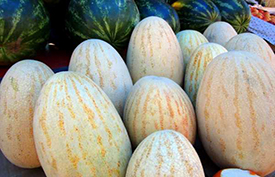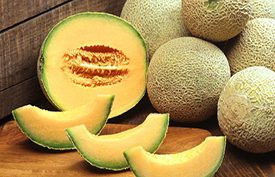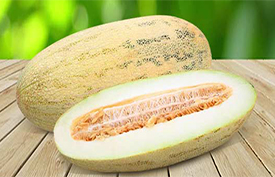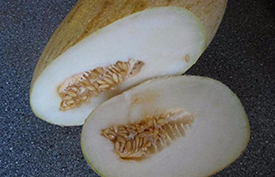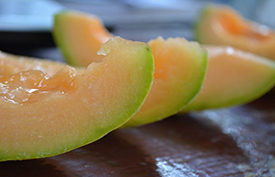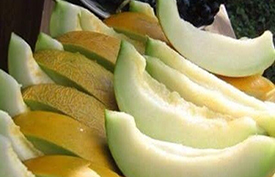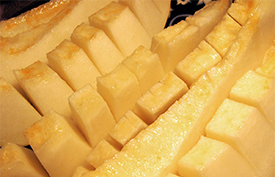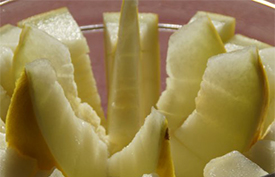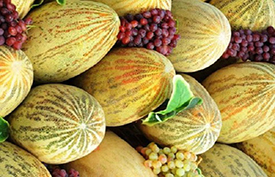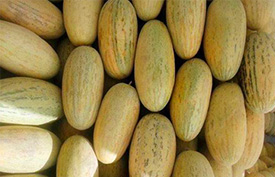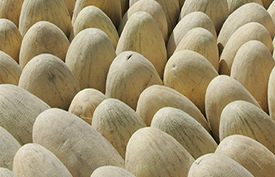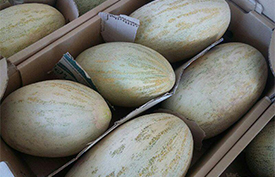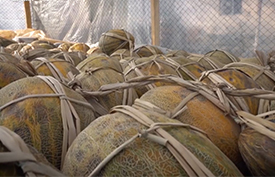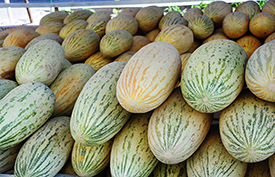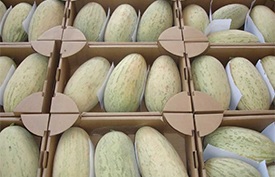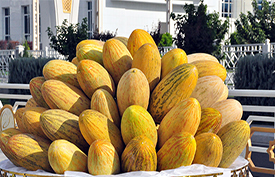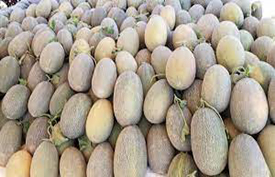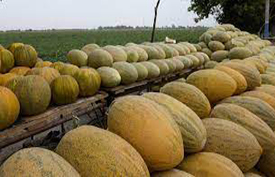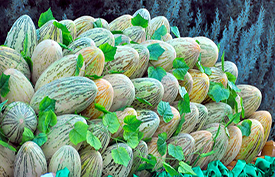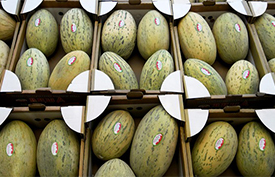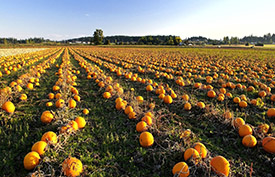Melons
- Agriculture
- Our Elevators
- Our Certificates
- Our Diplomas
- Organic certification
- European Certification
- Halal Certification
- Wheat - Wheat flour - Mills
- Buckwheat - Buckwheat flour
- Linen Seeds
- Corn – Сorn flour
- Oats – Oat flour
- Rye – Rye flour
- Barley – Barley flour
- Sunflower seed
- Chickpeas, Peas – Pea flour
- Beans
- Soybean seeds
- Pumpkin seeds
- Rape seeds
- Sugar beet pulp
- Beer pellets
- Meal for animal feed
- Production plant L-lysine, Gluten, Alcohol, DDGS, CO2
- Sugar Factory
- Oil Extraction Factory
- Rice Processing Plant
- Milk Powder Production Plant
- Meat Processing Plants
- Fruit Storages
- Bioproducts Plant
- Malt plant
- Cheese production plant
- Aquaculture feed production plant
- Cold Storage and Meat Processing Plants
- Cattle - meat beef
- Pig breed - Pork meat
- Sheep breeds - lamb meat
- Poultry meat
- Chicken egg
- Quail
- African chicken, cisar hen
- Geese meat
- Our beegarden
- Honey
- Bee products
- Gardens
- Containers, packaging and calibration
- Factory for the production of juices and tomato paste.
- Quince
- Pear
- Peaches
- Plum
- Cherry
- Apples
- Apricot
- Berries
- Grape
- Figs
- Mulberry
- Nuts
- Almond
- Watermelon cultivation technology
- Melons
- Transportation
Melons
Melon is a symbol of the fertility of the Ukrainian land.
There is no equal anywhere in the world as fragrant, honeyed Russian and Ukrainian melon. It was noticed as far back as in ancient times, when the melon was considered an exquisite delicacy, and one melon could pay off with a camel. The first settlers who came to Russia at the end of the 19th century also appreciated the merits of the Russian melon. Hardly enduring the unusually hot climate, they wondered at the health, working capacity and cheerfulness of the local population.
Over the years, the new citizens of the Russian land have become convinced that, among other things, rational, time-tested, proper nutrition is of no small importance in the vitality of Russian. And here the melon, which has absorbed all the riches of vitamins, mineral salts, microelements, glucose, sucrose, pectins, carotene, takes an honorable place. It not only fed and watered but also healed a person.
From time immemorial Russian knew that melon pulp has a diuretic property, a decoction of young ovaries was used in case of stomach infections, and melon seed oil was used to cleanse the blood vessels.
Melon - strong, golden, - they took with them both on the caravan route and on the shepherds’ drives. Like the bread, sacred for a Russian, it did not deteriorate during the long days of the road and gave tired people not only strength, but also the joy of delicious food. Russian appreciated the melon at its true worth, knew the secrets of its cultivation and knew how to harvest it for future use.
Historical documents say that the Russian population of each district sowed and cultivated melons in their own special way (after the flood waters recession, the flood lands were sown with melon seeds, and during the entire ripening period they watered the plants only once, or, for example, in the fall they dug vast pits where all the rain and winter snow water were collected).
The Russian people had many different ways of harvesting melons for future use. Thick honey syrup, fragrant and sweet, was boiled from ripe pulp. They also prepared “seok”: wheat flour and sesame seeds were added to the condensed melon juice – this product lasted for 2-3 years. Sun-dried melon was woven into strands in order to get a delicious marmalade-like product. Wonderful dried melons were not only consumed locally, but also in the 19th - early 20th centuries were exported by Ukrainians. Interestingly, farmers knew how to preserve winter melon varieties until the next harvest, while their taste only improved during storage.
In short, the researchers of Ukraine saw the Russian melon grower as a restless worker, but at the same time noted how gratefully the “best known in the markets of the Russian Empire, the Russian melon,” responds to human care.
Melon is not only a delicacy, but also a medicinal product. Russian even practice a special course of melon treatment, using melon ovaries for many ailments. Local varieties of melons are distinguished by excellent qualities, they are especially sugary and aromatic.
Melon is one of the favorite delicacies during late summer and early autumn. Juicy, sweet, incredibly fragrant, this beauty will serve as a decoration for any table and will become an addition or the main ingredient of the most sophisticated dishes. Nowadays, there are about 1600 varieties of this melon crop, each of which has its own taste, size, shape. The heroine of our article today is the Turkmen melon.
It is known that all types of melons, of this truly wonderful and healthy product are united by a love for heat, dryness and a dislike for a large amount of water. It is not surprising that precisely in the southern regions of Russia the most delicious, sweet, literally ideal representatives of culture grow.
Variety description
“Turkmenskaya” is a generalized term used by modern gardeners and melon growers, as they say “Uzbek”, thus combining several varieties typical for this region.
In fact, the varieties that Russia offers us are over 400 varieties. And they are divided into four groups, which consist of representatives, differing in the rate of ripening and the periods when the harvest occurs:
In the first group there are early maturing varieties that reach maturity in 70 days maximum. They include Mazy, Ternek, Zamy. Juiciness and tenderness of the pulp, medium sweetness (up to 15% sugar) and pronounced aroma are typical of them.
The second group includes mid-ripening varieties that ripen from 75 to 100 days. Such melons are dense, crispy and juicy, slightly sweeter than the representatives of the first group. The pulp of these varieties contains up to 18% sugar.
The third group is also mid-season varieties, the beginning of ripening of which falls on the 95th day. Such varieties are characterized by a viscous, juicy and very sweet pulp and are stored for quite a long time. In particular these melons are used for cooking melon honey, drying and preserving.
Varieties of the fourth group are the most late-ripening. They ripen up to 120 days and grow incredibly large. Obviously they are not as juicy and flavorful as earlier melons. The amount of sugar in the representatives of this group reaches a maximum of 16%, the flavour is much less pronounced than in summer and early autumn fruits. But one cannot fail to appreciate these varieties at their true worth. They are the ones that become a juicy alternative to summer delicacies in winter cold weather.
Turkmenka variety belongs particularly to the fourth group. It rarely grows above average size, tolerates low temperatures well. And when becomes ripe by mid-autumn, it pleases with its sweetness and delicate, fresh scent. Her pumpkins are medium in size, the rind is deep green with a net of rough fibers. When the melon ripens, the net deepens, as if growing into a pumpkin, and turns dark brown.
Peculiarities of cultivation
Despite the name and origin, Turkmenka can withstand low temperatures perfectly, which makes it suitable for growing not only in the sultry southern regions, but also in more severe climates. Due to the fact that melons ripen in mid-September, seedlings are planted, rather than seeds, in open ground.
In cold regions, after planting, the beds are covered with foil to protect them from sudden frosts and keep moisture in the garden longer. It is quite convenient to use demountable greenhouses, because after the appearance of 2-3 true leaves, shelter is no longer needed.
In the process of fruit growth, they are often tied up to protect the fruit from damage, but in this case it is best to put something under the pumpkins so that they do not fall from the bush.
Also, after the appearance of the fourth or fifth true leaf, the melon must be correctly pinned and shaped. For this, the apical bud is removed in order to stimulate the development of lateral stems. The main stem is usually tied to a trellis or put on a garden net, and the lateral appendices are regularly pinched if ovaries appear on them, or completely removed if ovaries do not appear. The sections must be treated with coal or lime so as not to give a chance for infections to get inside the plant.
Uzbek melons
Paradise delicacy
Do you love melons the way all the supreme rulers of the East loved them, starting from the epoch before our era? In Russia, they say: “Melon makes cheeks rosy, teeth strong, hair silky, and eyes young!” In Uzbekistan, Kyrgyzstan and Tanjikistan, melon is loved as a woman; in Turkmenistan - it is respected as a president!
In addition to its dizzying aroma and sweetness, the melon boasts a rich array of health benefits. One of the most important properties of melon is its ability to influence the production of endorphins, which makes it a good remedy for depression and blues. In addition, the nutrients contained in the plant have a pronounced tonic effect, and vitamin C strengthens the immune system. Rich in iron salts, melon is prescribed for anemia and various heart diseases. The high content of silicon in the pulp of the paradise fruit cannot but please women. After all, this element is very important for the health of hair and skin, which makes melon the number one cosmetic product for intake. The ability to improve skin, hair and nerves has been noticed in melon since ancient times, at the same time the fact that melon seeds have a beneficial effect on male strength was noted. In addition, melon is rich in fiber, which allows it to be used to detoxify the body.
The climatic conditions of the southern part of Russia are perfectly matching for the cultivation of these paradise fruits, as the melon was also called in ancient times. And it was the climatic conditions that gave the impact for the appearance of a huge number of varieties of melons, differing both in their appearance and in taste. Even a small change in the amount of sunny days can lead to crop failure, so the work on breeding new varieties does not stop.
Fergana zone, Bukhara and Samarkand zones, Tashkent zone, famous in turn for such varieties of melons, which, thanks to the skill and knowledge of agronomists-melons, who came to live with us in Ukraine, and their golden hands, began to be grown for the third year in the southern productive Ukrainian lands.
Kukcha
Long, green, hard and a bit like an overgrown cucumber, the melon of the kukcha variety will appeal to those who do not like much too sweet melons. It has a solid, juicy white pulp, not very pronounced aroma and refreshing, not too sweet taste. Melons of this variety are the sweetest in July, but they can be enjoyed until autumn as the kukcha season ends in September or October.
A whole melon, even without a refrigerator, will calmly lie for up to five days, but the chopped one should be eaten right away. The refrigerator will allow you to stretch out the pleasure as the melon can be stored in it for up to 6 days.
Kuk duppi
A green skullcap or just a skullcap — that’s how this melon is called. Round, weighty, slightly ribbed, with a dark green skin and almost no aroma — well, except that it slightly smells a pumpkin ...
This melon, like chillaki, belongs to the soft varieties. It also ripens within 90 days, but it treats the heat more comfortably than the first variety described above. Moreover, kuk duppi can be stored in the refrigerator for up to 5 days — although it is soft, it is not so delicate and capricious. But if there is no refrigerator, this melon, like all the others, must be eaten at once.
Kyzyl kovun
The tiger-like melon shows off a striped skin adorned with a composite mesh pattern. It has orange pulp, similar to pumpkin. Kyzyl kovun or krasnomyaska refers to hard varieties of melons, it looks more like a pumpkin — both in taste and in smell. Though, very tasty pumpkin!
Krasnomyaska has one interesting feature that should be taken into account by people who have had malaria – it can provoke an attack similar to malaria. For all the others, krasnomyaska is not dangerous in this regard, help yourself to your health!
Zhura kand
Green skin with dark stripes, white pulp, mild aroma, but surprisingly sweet, sugar taste – this is what the Zhura kand melon is. This type also belongs to soft varieties, it is quite tender and capricious – sliced melon can be stored in the refrigerator for only one day. It can be stored uncut for up to four days.
Zhura kand quickly spoils, but its size (rather modest in comparison with some melons) will allow you to eat this melon quite quickly. Cold, juicy, sweet melon is a great dessert in summer time.
Mirzachul melon
Mirzachul melon or torpedo, as it is known among the people, is perhaps the most popular of all types. It is loved not only here in Russia, but also in Ukraine, Europe and even America: Mirzachul melon takes the honorable first place in export to other countries. It became possible to export a torpedo due to the fact that it is a resistant variety – it is stored uncut for the longest time. And in the cut form, the torpedo can be stored in the refrigerator for up to 5 days.
There exist a subspecies of Mirzachul melon, called “meter”, which differs in size: meter is a giant melon that grows in length almost more than a meter. A fragrant and sweet torpedo has firmly gain a place both in markets and in the hearts of Ukrainians – and not in vain, it is worth to try it.
90% of the melon harvest from Russia, Turkmen, Uzbek, Tajik and Kazakh varieties is sold for export to the UAE, Saudi Arabia, Kuwait, Oman, Iraq, Qatar and many other countries. All melons grown by our experts are in great demand in many countries of the world. Bon appetit and good health to everyone.





